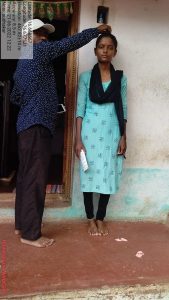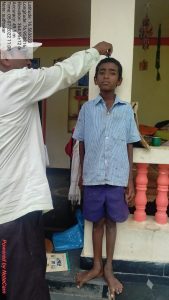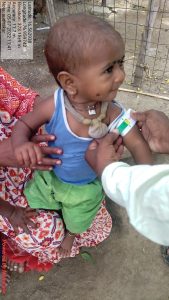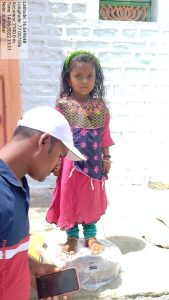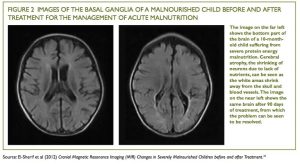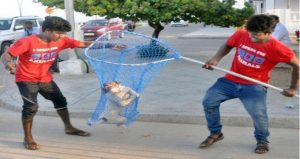IN A NUTSHELL
Author's note
 Storytelling is a vital tool for overcoming vaccine hesitancy in Africa. It builds trust, helps people understand, and connects through shared culture. This approach creates messages that resonate deeply.
This article will show how smart storytelling can fight vaccine hesitancy across Africa. It helps build more faith in vaccines and makes communities healthier.
Storytelling is a vital tool for overcoming vaccine hesitancy in Africa. It builds trust, helps people understand, and connects through shared culture. This approach creates messages that resonate deeply.
This article will show how smart storytelling can fight vaccine hesitancy across Africa. It helps build more faith in vaccines and makes communities healthier.
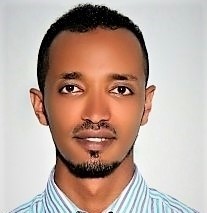
By Kirubel Workiye Gebretsadik
Medical Doctor, Ras Desta Damtew Memorial Hospital
Addis Ababa, Ethiopia
By the same Author on PEAH: see HERE
Storytelling to Combat Vaccine Hesitancy in Africa
Building Trust Through Narrative
Vaccine hesitancy remains a big problem around the world. In Africa, this challenge gets even trickier. Old hurts, limited health systems, and many different cultures make things complex. People often have good reasons for their doubts, rooted in their history and daily lives.
This is where storytelling comes in. It’s a strong tool that fits well with African cultures. Stories can reach emotions, help people understand each other, and share important facts in a way folks remember. They build bridges where plain facts might not.
Understanding the Roots of Vaccine Hesitancy in Africa
Many factors cause people to hesitate about vaccines. Looking at these reasons helps us create better ways to talk about health.
Historical Context and Mistrust
For years, people in many African countries have been wary of outside medical help. This is often due to past events.
Legacy of Colonialism and Exploitation
Some medical tests or treatments were done in Africa long ago without real permission. They felt like tools of control, not help. This history leaves a long shadow, making people question new health programs today. They remember times when trust was broken.
Perceptions of Western Medicine vs. Traditional Healing
Many people in Africa trust their traditional healers and old ways of medicine. These practices are part of their culture and beliefs. Sometimes, western medicine, like vaccines, seems to go against these trusted methods. This can make people choose traditional healing over new medical advice.
Socio-Cultural and Economic Factors
Beyond history, daily life and community ties also shape how people feel about vaccines. Money, social circles, and false information play a big role.
Community Beliefs and Social Networks
Your friends, family, and church leaders can really sway your health choices. If people you respect doubt vaccines, you might too. Religious leaders or village elders’ opinions hold a lot of weight. Peer pressure, good or bad, is a powerful force in communities.
Impact of Misinformation and Disinformation
False news spreads fast today. Bad info, made-up stories, and crazy ideas about vaccines fly around online and by word-of-mouth. In places where internet access is new or reading skills are lower, these untrue tales get believed more easily. They can really scare people away from vaccinations.
Economic and Access Barriers
Sometimes, people want vaccines but can’t get them. The trip to a clinic might cost too much money. Taking time off work to get a shot means losing wages. Some clinics are just too far away. These real-life problems can stop people from getting vaccinated, even if they aren’t against it.
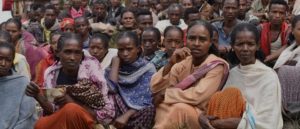
The Power of Narrative: Why Storytelling Works
Stories do more than just entertain. They touch our hearts and minds in special ways, making them perfect for health talks.
Emotional Resonance and Empathy
Stories pull at our feelings. They turn big, complex ideas like public health into something personal. When you hear a story, you can imagine yourself in someone else’s shoes.
Connecting with Personal Experiences
Stories from people who got very sick from preventable diseases hit hard. So do tales from families whose kids stayed healthy because of a vaccine. These real-life experiences make the benefits of vaccines clear and easy to grasp. They show the human side of health.
Building Trust Through Authenticity
Facts and official statements are good, but they don’t always build trust. Real stories, shared by real people, feel honest. They show what happened, not just what someone says should happen. This kind of honesty can build faith in vaccines more strongly than a stack of papers.
Cultural Relevance and Accessibility
For a long time, stories have been a key part of African cultures. This makes them a natural way to share health messages.
Leveraging Traditional Storytelling Formats
Many African cultures have rich oral traditions. They use proverbs, folktales, music, and plays to teach and share news. Using these familiar ways to talk about vaccines makes the message feel local and right. It makes health information feel like it belongs.
Translating Complex Science into Understandable Narratives
Science talk about vaccines can be hard to follow. Stories can break down these tough ideas. They turn safety facts and how vaccines work into simple tales. This helps everyone, no matter their schooling, understand why vaccines are important.
Effective Storytelling Strategies for Vaccine Confidence
Knowing stories work is one thing. Using them well is another. Here’s how to make stories truly effective.
Showcasing Personal Testimonials and Success Stories
Hearing from people who lived through it can change minds. Real-life examples are powerful.
Narratives of Recovered Patients
Imagine hearing from someone who almost died from polio, now walks with a limp, and wishes they had been vaccinated. Or someone who survived measles because they got their shots. These stories, like those from polio survivors, highlight what vaccines prevent. They show the terrible pain and lasting harm of these illnesses.
Testimonials from Healthcare Workers
Nurses and doctors see sick people every day. They know what vaccine-preventable diseases look like. When frontline health workers share their experiences, it carries a lot of weight. Their personal reasons for urging vaccination come from seeing real suffering.
Community Champions and Influencers
Local heroes matter. Stories from respected leaders, elders, religious figures, or local stars can sway whole communities. If someone people look up to champions vaccines, others are more likely to listen. They become the trusted voices for health.
Creative and Culturally Sensitive Content Creation
How stories are told makes a big difference. It’s about making them fit the local setting.
Utilizing Diverse Media Channels
Stories can come alive through radio plays, short movies, and community theater. Animated videos, podcasts, and social media posts can also spread messages far. The best way uses local languages, customs, and art styles. Local creators know best how to speak to their own people.
Storytelling with Data: Weaving Facts into Narratives
Don’t just list numbers. Put facts into stories to make them stronger. Instead of saying “vaccines prevented 70% of severe cases,” tell about Amina. Say, “Amina’s child was one of the many who avoided severe illness because of the vaccine.” This makes data feel real and personal.
Engaging Local Storytellers and Artists
The most real stories come from local talent. Partner with filmmakers, writers, musicians, and oral historians from the community. They ensure the stories feel true and speak directly to local hearts. This builds deep connections and lasting impact.
Addressing Specific Concerns Through Narrative
Stories can directly tackle common fears and wrong information. They can offer answers in a gentle, clear way.
Demystifying Vaccine Safety and Side Effects
Use stories to explain how vaccines are tested carefully. Share accounts of parents whose child had a mild fever after a shot, then was fine. Contrast this with a neighbor’s child who suffered greatly from a preventable illness. This helps people understand small, short-term side effects are normal and nothing like the real disease.
Countering Conspiracy Theories with Truthful Narratives
False stories about vaccines can be scary. Use true narratives to show how vaccines were made and helped many people. Share stories of communities thriving because of vaccines. This gentle truth can slowly chip away at the power of conspiracy theories.
Case Studies and Impactful Initiatives in Africa
Many places in Africa have already shown how powerful stories can be. We can learn from their success.
Successful Storytelling Campaigns
Real examples prove storytelling works.
Example 1: Polio Eradication Narratives in Nigeria/Northern Africa
In some parts of Nigeria, stories were key to fighting polio. Religious leaders and people who survived polio shared their tales. These stories helped calm fears and build trust, helping more children get the vaccine. They made a real difference in the fight against this terrible disease.
Example 2: COVID-19 Vaccine Confidence Campaigns Across Sub-Saharan Africa
During the COVID-19 pandemic, many African countries used stories to boost vaccine trust. Radio programs, community talks, and social media featured real people sharing why they got vaccinated. Campaigns like “Voices for Vaccines” highlighted personal reasons, helping others feel more confident about getting their shots.
Measuring the Effectiveness of Storytelling
How do we know if these stories are working? We need to look at the results.
Pre- and Post-Intervention Surveys
Before sharing stories, ask people about their vaccine knowledge and feelings. After the stories spread, ask them again. Seeing changes in their answers helps us understand if the stories made a difference. Did people learn more? Do they feel better about vaccines?
Tracking Vaccine Uptake Data
Look at how many people actually get vaccinated in areas where stories were shared. If vaccination rates go up after a campaign, it shows the stories probably helped. Connecting when stories are told to when more shots are given is important.
Qualitative Feedback and Community Engagement
Listen to what community members say. Ask them how the stories made them feel or what they learned. Their personal feedback and comments give us a clear picture of how stories changed their thoughts and actions about vaccines.
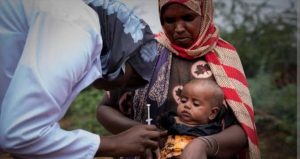
Conclusion
Storytelling is a vital tool for overcoming vaccine hesitancy in Africa. It builds trust, helps people understand, and connects through shared culture. This approach creates messages that resonate deeply.
Remember these key points: Stories are not just nice tales; they are strong tools for our minds. For stories to work, they must feel real and fit the local culture. The best results come from mixing personal accounts, expert views, and creative media. And always, investing in local storytellers makes a bigger, lasting impact.
We must keep finding new, story-based ways to build faith in vaccines. This will help every person in Africa achieve better health.








